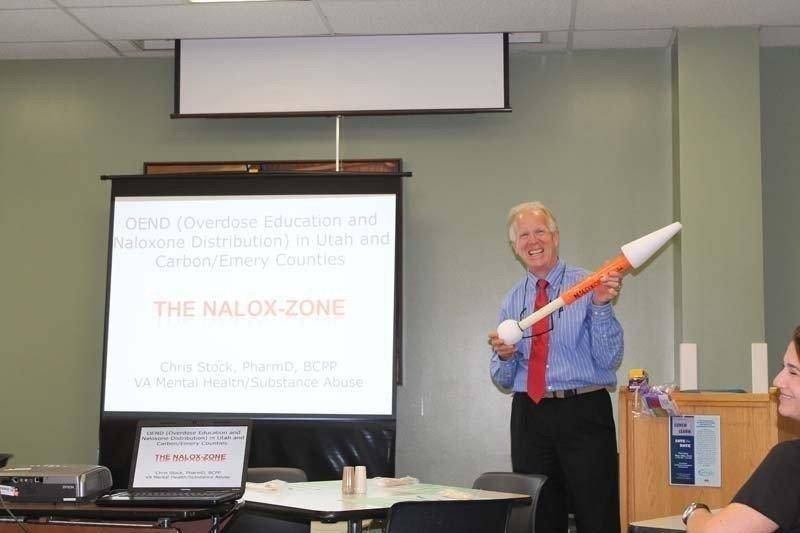Tuesday at Castleview Hospital, Christopher Stock, a clinical pharmacy specialist for the VA medical center, presented information about a relatively new Utah state law. The law concerns administration of Naloxone, a prescription drug that can prevent death in the case of drug overdose (OD), enabling anyone to administer the drug, not just medically trained personnel. Since the combined OD death rate in Carbon and Emery counties is considered high when compared to the rest of the state, the information is needed in this area.
In his presentation, Stock showed the need for such legislation, especially in Utah. Utah was in the top 10 in number of OD deaths in 2010, at nearly 17 in 100,000 people. Also, in one year, Utah has the most veteran OD deaths nationally at 37 in 100,000. More than half of OD deaths come from prescription painkillers. Use of painkillers nationally has quadrupled since 1999. “Many prescription drugs,” said Stock, “are not used as directed.”
One reason why the rate for veteran OD death is so high is due to the difficulty for doctors to track what they are taking. Legislators have only recently made it possible for doctors to see what other doctors are prescribing to veterans.
“Doctor shopping is a risk factor for overdose and the VA has been dragging its feet to comply with this new policy,” said Stock.
There were many risk factors discussed at the luncheon. Among them was mixing the pain relievers with Benzodiazepines. These drugs are commonly prescribed for insomnia, anxiety and alcohol dependency. When combined with painkillers, they lower the tolerance level of the body to the painkillers, increasing the chance of an OD. Since 2010, there have been about 40 drug overdoses each year in Carbon County alone.
When asked what can be done, Stock responded that many things can be and are being done. Some doctors prescribe a lower amount of pain killers, for example 20 pills instead of 120. He stated also that unused drugs should be disposed of. There are drop boxes available for unused drugs at IHC pharmacy locations. Mail-in drug bags were also mentioned.
Naloxone can be purchased at pharmacies with a prescription and can be administered nasally or with a syringe. The drug can be stored for years in a cool place, such as in a first aid kit.
“The effectiveness of the drug diminishes when it is exposed to heat,” Stock warned. “So, if you store it in your car, bring it inside with you, otherwise it will only last months instead of years”.
For more information on the new law, see Title 26 Chapter 55 of the Utah State Code or visit prescribetoprevent.org.









